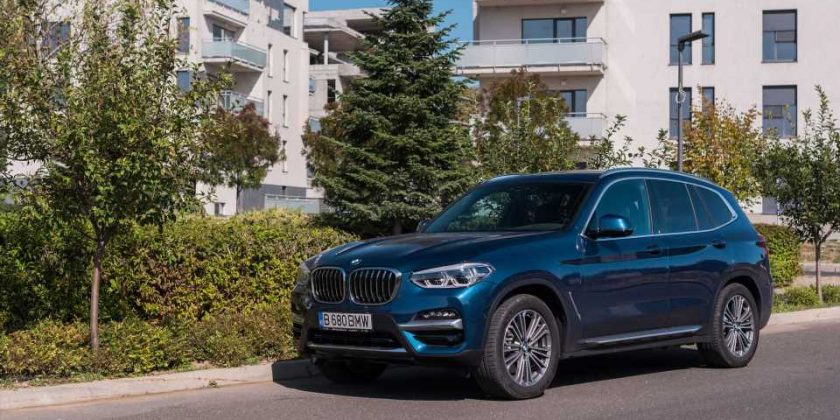After a few days with the X3 xDrive 30e, this whole plug-in hybrid trend starts making sense.
Purity is not a term that’s of much concern to the modern car buyer, or for the manufacturer for that matter. By purity I mean the simplicity behind the engineering – the less going on under the hood and the car’s body, the more pure it is.
This means that a simple, gas-burning or pure-electric vehicle with a single driven axle is about as pure as they get. In fact, since EVs don’t even have a complicated gearbox and the motor feeds its power to the wheels through a simple reduction gear system, an EV is even more pure than a conventional gas car.
So what do you get when you meld a conventional ICE vehicle with an EV? You get a plug-in hybrid, of course, and such vehicles are the lest pure ever produced (i.e. the most complex). You not only get a gasoline engine, but also an electric motor working at the same time so there’s a lot going on.
Make that PHEV all-wheel drive and there’s even more going on. In my mind, all that hidden complexity should make its presence felt and make the vehicle awkward to drive and not fun.
Gallery: 2020 BMW X3 30e xDrive PHEV
38 Photos However, my assumptions about purity and all that malarkey were proven wrong after I drove the latest BMW X3 xDrive 30e. It has the same powertrain as the 330e and 530e, but in this SUV body, it is also hooked up to all-wheel drive. On paper, it shouldn’t be particularly good; definitely not the best non-M version of the current X3. And yet, after driving it for a few days, I have to concede that it works remarkably well – it’s comfortable, sporty, frugal if kept charged and the seamlessness of the powertrain operation is truly remarkable. Furthermore, even if the extra complexity of the PHEV system also adds almost 200 kg (440 pounds), you don’t really feel it that much while driving. In other PHEVs (that have simple ICE versions too), where you feel the extra weight is in the corners where the plug-in feels more prone to understeer and roll. However, in the X3 plug-in hybrid, you hardly notice the extra weight. BMW has somehow managed to disguise it, which isn’t as easy as it sounds. In another BMW group PHEV, the MINI Cooper SE Countryman All4, you can really feel the extra weight, to the point where if you’ve also driven the non-plug-in variant, the difference will feel like night and day. That’s what makes the X30 xDrive 30e such a great choice: it doesn’t feel like you’re making a compromise. It handles almost the same as a 30i, it’s faster than a 30i and if you do your best to keep its battery charged, it is way more efficient too; if you don’t keep it charged, it’s slightly less efficient than the 30i, but not by a huge margin. And its pure-electric range is not terrible, either. According to the WLTP test cycle, the car should achieve just over 50 km (31 miles) on battery power. The EPA estimate is a bit more conservative, 18 miles, but based on my experience, it’s a bit too conservative. The first thing I did when I picked the car up was to try to see just how much range I can eek out of the 12 kWh battery pack (whose usable capacity is 10.8 kWh). The electric range meter showed 38 km (23 miles) when I got the car, so I would have called myself impressed if the car reached 40 km (25 miles). But it didn’t; I actually drove it for some 47 km (29 miles) before the engine started for the first time. Granted, this was done in town, mostly in stop-start traffic, but it exceeded expectations (which is rare when it comes to PHEVs’ electric range). Charging the X3 30e could be faster, though. Its peak rate of charge is 3.7 kW, so it still needs just over 3 hours for a complete top-up. So any kind of fast charging is out of the question and this somewhat limits the vehicle’s usability, unless you can keep it charged at home (or at work). Basically, there is a lot to like about the X3 in this configuration, but just like with all PHEVs, having easy access to charging is vital to make the most of the vehicle (and use it the way it was intended). Yet in the realm of PHEV SUVs, particularly in its size bracket, the X3 xDrive 30e is hard to beat, just as long as you can stomach the fairly high acquisition price (especially if you’ll want a well specced example). If you’re in the market for a plug-in SUV, but you feel like you’re not ready to make the jump to a full EV, then this X3 is worthy of consideration. There’s a good chance it will be your last gas burning vehicle, once you experience the serenity it provides when driven on battery power alone. Source: Read Full Article








